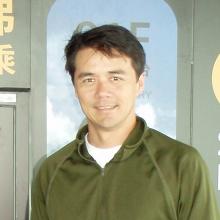
Professor Amy Mainzer from the University of Arizona is an American astronomer, specializing in astrophysical instrumentation and infrared astronomy. She holds a Bachelor’s degree with honors in Physics and Masters and Ph.D. degrees in Astronomy at UCLA. Dr. Mainzer was a research scientist working on different projects at NASA's Jet Propulsion Laboratory, including the Wide-field Infrared Survey Explorer (WISE), the Near Earth Object Camera (NEOCam), and NEOWISE mission to study asteroids and comets using the reactivated WISE satellite. She previously worked for Lockheed Martin Advanced Technology Center on the Spitzer Space Telescope.

Larry Denneau is a senior software engineer at the University of Hawaii and co-PI of the Asteroid Terrestrial-impact Last Alert System (ATLAS), an all-sky robotic survey funded by NASA to search for hazardous asteroids. He came to Hawaii in 2004 to be the chief architect of the University of Hawaii's Pan-STARRS moving object processing system (MOPS), the software that finds asteroids in the Pan-STARRS survey data. In 2013 he migrated to the ATLAS survey, where he has adapted and improved MOPS for the ATLAS data stream. Larry has been poking at computer keyboards since the early 80s and received his B.S. in electrical engineering from the University of Arizona in 1990, whereupon he quickly escaped academia. His software career has spanned projects ranging from surface metrology for the semiconductor industry, medical scheduling, geophysical instrumentation, and even a dot-com Internet startup. Safely back in academia, Larry completed his Ph.D. in astrophysics from Queen's University Belfast in 2014 and enthusiastically continues to help protect the earth from dangerous asteroids. When he is not in front of his computer, Larry can be found catching waves at local surf breaks or at the duplicate bridge table.
